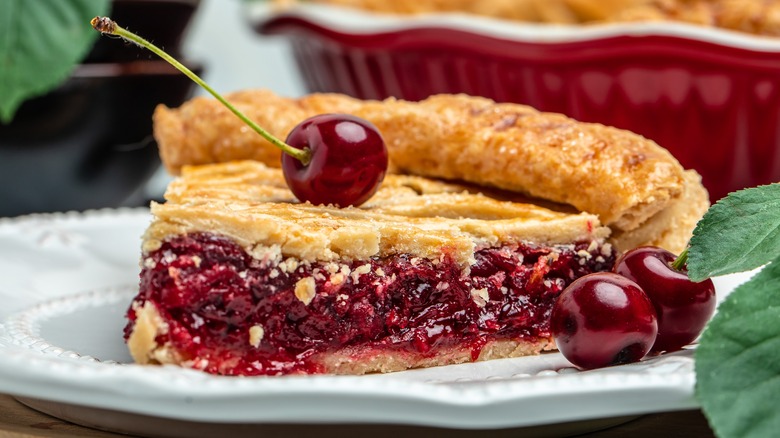3-Stage Baking Ensures A Perfectly Crisp Pie Crust Every Time
Everyone loves the contrast between a crisp, flaky pie crust and its juicy filling, but it's disappointing to bite into a crust that misses the mark. Whether you're struggling with a doughy texture or a soggy bottom, you can take your pie crust to the next level just by adjusting your oven. The secret's all in your baking temperature, as explained by chef Grant Crilly in his three-stage baking tip for PBS Food.
First, Crilly suggests baking your pie for 10 minutes at 450 degrees Fahrenheit to set the crust. Next, turn the temperature down to 350 degrees Fahrenheit and bake until the filling is set (your baking time will vary depending on the filling, from approximately 45 minutes for a coconut custard pie to over an hour for a Dutch apple pie). Finally, raise the temperature back to 450 degrees Fahrenheit and bake for another 10 minutes to sear the crust.
If you're prepping for a big meal or a holiday, you can finish the first two steps ahead of time and hold your pie in the refrigerator. Then, pop it into the oven for one last high-heat bake just before serving. Crilly says this final bake can even improve store-bought pies, producing a crispier, more delectable crust that you'll be proud to serve.
More temperature tips for perfect pies
When it comes to pie crust, the right temperature is important for ingredients too. That means chilling everything in advance, including the butter, water, and even the flour. Once you've mixed up the dough, chill it a second time before you roll it out and place it into the pie pan. By starting with cold ingredients, you can keep the butter solid until your pie crust is in the oven, where each chunk will melt into a little pocket to build scrumptious, flaky layers.
Before the pie goes in the oven, you can also brush on a wash to enhance the Maillard reaction in your crust — another process that relies on heat. This chemical reaction between proteins and sugars helps develop a gorgeous, golden-brown hue and mouthwatering flavor and aroma. It's a simple step that can help elevate even a store-bought pie crust into something special.
The right bakeware can also enhance the way your crust develops in the oven. Chef Grant Crilly suggests baking pies in dark pans, which transfer heat more quickly than glass or shiny pans. You can also bake the pie on a pre-heated oven sheet to help the butter in the bottom crust melt faster and coat the flour. This forms a barrier that prevents the filling from soaking into the crust, making every bite crisp, flaky, and satisfying.

